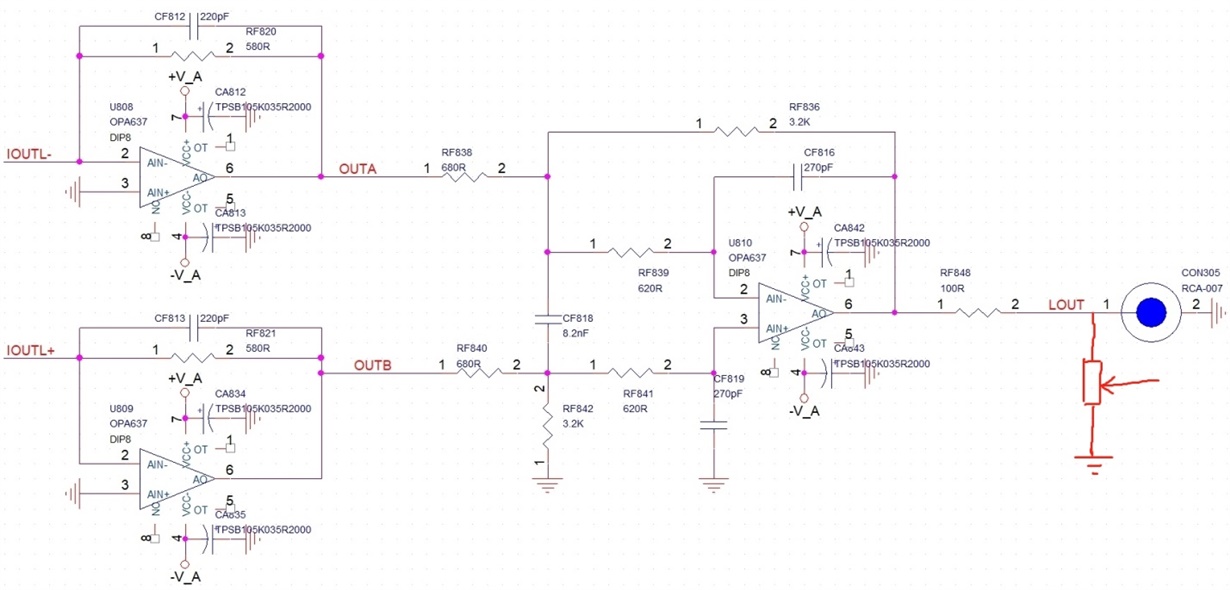Other Parts Discussed in Thread: OPA2132, , OPA627, OPA37, OPA828
The following figure parameters, Part of IV. There was no noise when using OPA627 or OPA2132 before. When using OPA637, if the gain was too large, the signal would be distorted. Turn down the volume at the current end, the sound break still exist, why?
It is found that when OPA637 is used in IV conversion and the feedback resistance is greater than 560R, the output has broken sound, broken sound disappear when the feedback resistance is less than 560R. But in the LPF part of the latter stage, the other circuits are the same.
In order to meet the stable gain (5db) of OPA637, the feedback resistance is changed from 620R to 3.2K. When the signal source is silent, there is more noise. If the feedback resistance is unchanged and continued use 620R, the gain and noise will be much less. But 620R used in other amplifiers’ feedback circuit, it have no similar noise.
LPF output LOUT uses a 10K adjustable potentiometer for volume control. When the front-end signal is silent, the torsional potentiometer and the low-frequency horn diaphragm will move greatly. In the process of volume increase, the horn diaphragm moves inward, the volume decreases, and the horn diaphragm moves outward. And the amplitude of the movement is related to the speed of the potentiometer. The faster the torsion speed, the greater the amplitude of the diaphragm moves. When the torsion stops, the diaphragm will return to its normal position. When the feedback resistance is large, the motion of the diaphragm will be more obvious. Other op-amps will not have this phenomenon. In the process of adjusting the volume, the horn diaphragm moves, and there is noise similar to white noise. In the process of adjusting the volume, the noise from 30% to 90% is basically low-frequency noise. When the volume is over 90%, the noise jumps directly to high-frequency noise.
Is there any reference design for OPA637 used as LPF part? Thank you very much.


